Heavenly giants
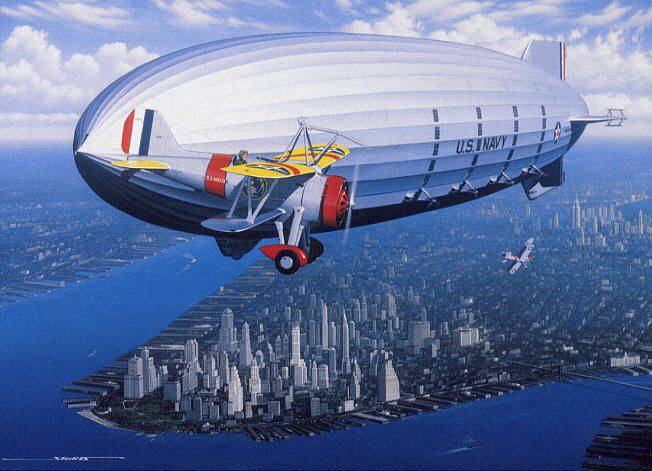
The heyday of the era of airships falls on 1920-1930-s. And, perhaps, the most unusual representatives of the giants are aircraft carriers.
But first, briefly about the essence of "flying mastodons". Jean Battista Marie Charles Meunnier is recognized as the inventor of the airship. Airship Meunier was to have the shape of an ellipsoid. The controllability was planned to be carried out with the help of three screws brought into rotation by the muscular forces of the 80 man. By changing the volume of gas in the airship by acting on the balloon, it was possible to change the altitude of the balloon, and therefore the project envisaged two shells — an outer main and an inner one.
The first in the world to fly the French airship "La France", equipped with an electric motor. It happened in Shal Mudon 9 in August 1884. The second aeronaut was German Dr. Welfer, who installed a gasoline engine on his own device. But in June of 1897, the Wolfera airship exploded in the air, leading a sad and very long list of catastrophes. Nevertheless, gas ships invariably attracted the attention of inventors and designers.
At that time, the speed of the airships reached 135 km / h and differed little from the speed of the aircraft. Flight altitude reached 7600 m, and the maximum duration up to 100 hours. The mass of the payload was about 60 t, which included the mass of the crew, the supply of water and food, ballast, weapons.
With the increase in operating experience of aircrafts, the reliability and safety of their flights significantly increased, including in adverse weather conditions.
Towards the end of the war, the airships flew in any weather and performed combat missions in the clouds day and night, as they began to use a special device — light gondolas, being lowered from the board. There were one or two crew members, and the airship was above the clouds. Communication with the gondola was maintained using the telephone. It is almost impossible to detect a tiny gondola against the background of clouds, while two observers located in the cockpit could successfully conduct reconnaissance, correct the fire of the ship's artillery and themselves conduct bombing on targets.
By the beginning of World War I, Russia had built 9 airships, the best of which was the Albatross of 9600 cube. m, length 77 m. By the end of the war purchased another 14 airships. Then there was no time for balloons. And only in 1920, Russia began to build small airships again. In the USSR, the first airship was made in 1923 year. Later, the special organization Dirizhablestroy was created, which built and put into operation more than ten balloons of soft and semi-rigid systems. The indisputable achievement of domestic airship builders was the world record of flight duration - 130 h 27 min. airship B-6, cube 18500 m. Later, in 1938, B-6 crashed on the Kola Peninsula when in the fog it collided with a mountain not marked on the map.
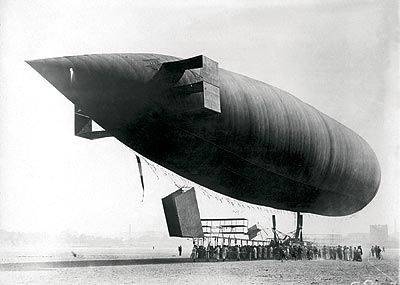
Control of the airship, contrary to the current simplified opinion, on the ground and in the air is much more complicated than by aircraft. On the ground, the airship bows to the mast, which is a rather complicated procedure. In flight, in addition to controlling the aerodynamic control surfaces and several engines, it is also necessary to monitor the carrier gas and ballast. The airship takes off as a result of ballast discharge, and the descent is due to partial release of lift gas and the action of the elevator. In addition, it is necessary to take into account the change in temperature and air pressure, especially when changing altitude, as well as the state of the atmosphere - precipitation, icing, wind.
Before talking about sea-based US aircraft-carrying airships, it should be noted that it was the Germans, with their special technical literacy and intuition, who became the ancestors of post-war British and American large-volume rigid airships. The fact is that in 1916, the German Zeppelin LZ-3 was hit by anti-aircraft fire and landed on the British Isles. Its design was thoroughly studied, literally "under the bones", and it became the prototype for all our airships, our allies, at that time.
Zeppelin LZ-3.
In the future, under the Versailles Treaty, Germany was forbidden to build military airships for personal use, but they could legitimately produce them in reparations. Thus, in 1920, the giant sea-going airship L-72 was built and handed over to France at the Zeppelin shipyard in Germany. It was one of the three newest airships with a length of 227 m and a shell diameter of 24 m. Its payload was 52 tons. The power plant - six Maybach engines for 200 hp. The French gave him the name "Dixmude". On it, the crew of Captain Duplessi successfully carried out the tasks of the command of the Navy, and also set a number of records that even now can strike our imagination: the duration of the flight 119 h and the length of the route 8000 km.
After the end of World War I, 300 airships remained in service. First of all, with their help, the competition began for the conquest of the world's oceans by air. The first flight across the Atlantic was made in July 1919 on the R-34 airship from Great Britain to the USA. In 1924, the following transatlantic flight took place on the German airship LZ 126. In 1926, the combined Norwegian-Italian-American expedition under the command of R. Amundsen on the airship “Norway” designed by U. Nobile completed the first trans-arctic flight about. Svalbard - North Pole - Alaska. By 1929, the improvement of airship technology has reached a very high level. In September of this year, the Graf Zeppelin airship launched regular transatlantic flights. And in 1929, the LZ 127 with three landings performed a round-the-world flight. For 20 days, he flew more than 34000 km with an average speed of 115 km / h.
The Americans, given their geographical location, did not abandon the military use of airships. They have not yet used the military potential of these huge aircraft in reconnaissance at sea, in guarding the coast, escorting ships, searching for and destroying submarines and carrying out long-range military transport.
At first, the Americans began to build airships of the type of German LZ, and even bought German aircraft for their Navy. The period from 1919 to 1923 year was the time of entry of hard airships in the US Navy. During these years, the navy received the first three hard airships, and the US Navy aeronautical base was founded in Lakehurst, New Jersey. Congress has allocated funds to build airships ZR-1 and ZR-2.
The first flight of the ZR-1 called "Shenandoa" took place in 1923 year, only after the construction of the boathouse in Leikherst. The second airship under the number R-38 was built in the UK, but he never managed to see America. 24 August 1922, the airship crashed during a test flight, the US Navy killed 44. The third airship ZR-3, acquired in Germany, received the name "Los Angeles". Both airships were training aircraft and flying laboratories.
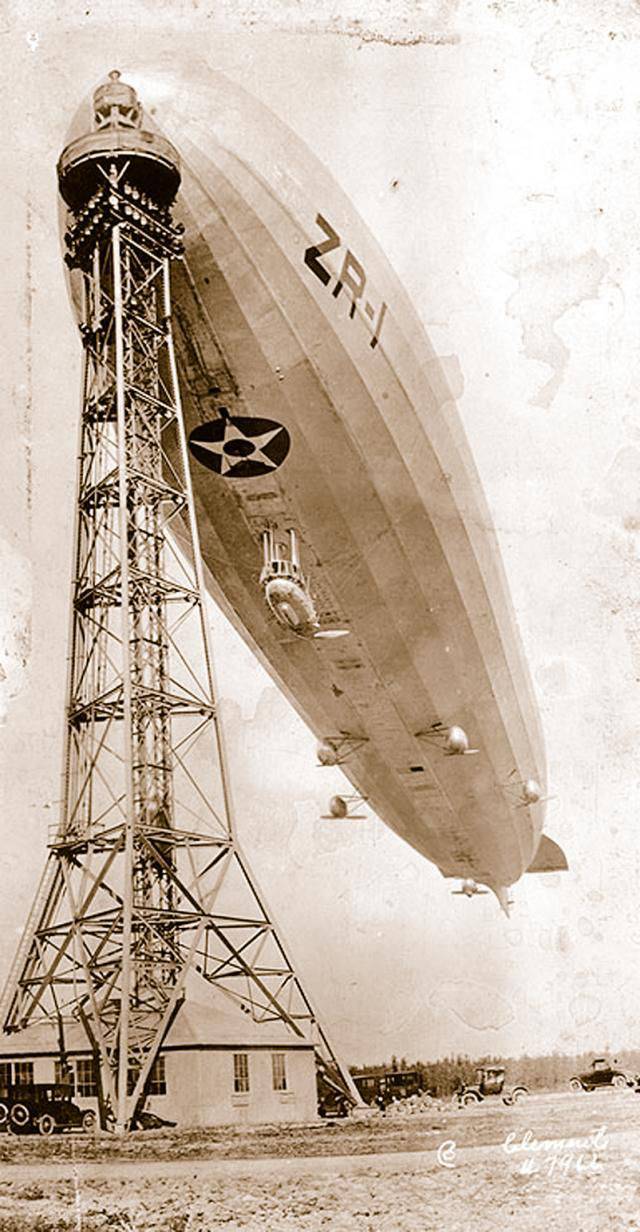
For the development and construction of naval airships in 1923, the joint venture with the Germans, Goodyear-Zeppelin, was created. The Aeronautics Bureau immediately began a preliminary study to create a reconnaissance airship. So for the first time on the papers of the corporation the obscure contours of the ZRS-4 and ZRS-5 (S - reconnaissance) devices appeared. In one, the customer was categorical: the airship must carry on board aircraft that will protect the airship and expand its reconnaissance capabilities.
All this led to the creation of an airship of at least 20000 cube. The project provided that such an aircraft carrier could carry from three to six aircraft. The second innovation is the replacement of carrier gas of hydrogen by non-combustible helium. The latter greatly expanded the combat capabilities of the airship.
When military experts discussed the future class of aircraft carriers, radical opinions were also expressed. Given the great vulnerability of aircraft carriers and the exclusive dependence of the deck aviation from hydrometeorological conditions, it was proposed to replace naval aircraft carriers with air ones based on ZRS-5 airships built in the USA. An aircraft carrier of average displacement of 19000 tons had a maximum speed of 27 knots and could take on board 31 aircraft. For their placement on aircraft carriers, 5-7 airships were required.
In the US, work was carried out on the creation of two airships for aircraft carriers for the Navy. By April 1924, the preliminary work was completed. The development was called "Project-60". But the tragic case unexpectedly stood in the way of realization of the conceived.
On the night of 2 on 3 September 1925, the Shenandoah airship was ripped apart by a hurricane over Ohio. The disaster claimed the lives of 14 crew members. Another catastrophe led to a ballooning crisis, and the ZRS-4 and ZRS-5 programs were postponed for a year.
It took four and a half years before the Shenandoah disaster subsided in public opinion, and it became possible to implement the “Project-60”.
The designers of the corporation did not waste their time during the period of raging public passions, but continued to work hard on the project and managed to arm the airships Akron and Macon with onboard aircraft. In the lower part of the hull of the airship, a T-shaped hatch was cut out, the entrance to the hangar for four aircraft. At the beginning of the hatch, a so-called trapezoid was suspended, to which planes should cling during the "landing" under the dirigible. On the ceiling of the hangar installed monorail system for the suspension and release of aircraft from the airship.
On the plane they installed a special hook, with which he clung to the trapeze, and then moved into the dirigible hangar. The designers spent three years to finalize the landing system to working condition.
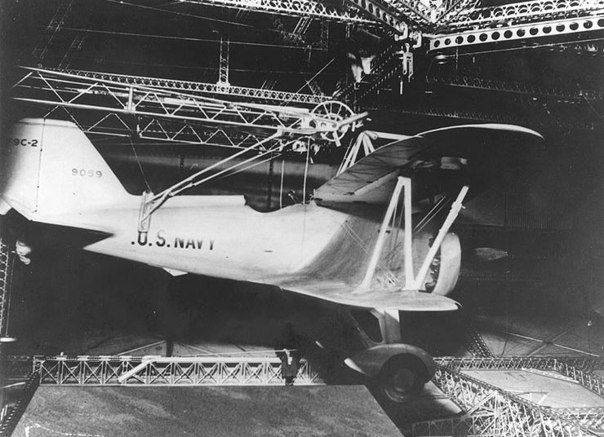
The first who managed to land on a trapeze, was Lieutenant Cloyd Finter. But it was not easy to do; when approaching the trapezoid due to the wake from the airship hull and the engines running, it was difficult to hook onto the bracket. It required a very precise movement of the steering wheel and the gas sector, so that in the conditions of turbulence there was a seizure. Finter only from the third approach, having overcome the confluent jet from below, was able to hook onto the trapezium brace.
When the hitch and take-off from the airship were mastered, the pilots of the air carrier began experiments to expand the combat capabilities of their aircraft carrier. At the presidential show fleet pilot Nicholson took off from the deck of the Saratoga aircraft carrier and, gaining the height of the Los Angeles airship, landed on the trapeze of the airship and hid in its hatch. Then the airship aircraft were used to deliver the mooring officer to the ground when landing an air ship at a new base. Subsequently, a special glider was used to deliver the officer to the ground, which was attached to the bottom of the airship.
In November 1931, the first of the two newest US airships was finally ready for testing. The crew and support personnel of Akron hurried to their posts in the hangar in order to prepare it for the first flight as a naval vessel. Finally, the engines are warmed up, the control system is checked, more than 350 kg of food is loaded, the balancing springs holding the airship in the center of the hangar are loosened, and the nose of the airship is fixed in the ring of the mooring mast. Everything was ready, and the small diesel locomotive began to move the mooring mast forward, and with it the device itself.
The airship was freed from the cables, the tail boom was removed and the mooring mast was towed further onto the mooring circle. Now Akron was ready to take to the air. And if you consider what a huge structure the hangar itself had, where a monster with a length of 240 m could be stored, then you can imagine how difficult it was to operate such aircrafts. For takeoff, the airship was disconnected from the mast, the propellers of the engines turned down to create vertical thrust and the ship rose into the air.
Acron’s entry into the US Navy was especially solemnly furnished. Until the end of 1931, this gigantic device was tested, and in January it already participated in the naval exercises for the exploration of ships in the ocean. In this flight, Akron got into adverse weather conditions with snow and icing, on the hull aft formed about 8 tons of ice, but he did not feel any difficulties in operating the ship, he withstood the first unfavorable tests in the sky.
Akron is the seventh tough airship built in the world since 1919, and the third in the United States. The new airship was the prototype of a detachment of ten hard airships intended for combat operations in the US Navy.
Care has increased: to dock airships, it is necessary to build mooring masts with a supply of fuel, water for ballast, electricity. Before mooring, the airship should be precisely balanced on the horizon, and then under the control of the crew, keep at the mast until a large ground crew, holding the guide rails (ropes pulled from the ship), will bring its nose to the top of the mast. Previously, high berthing masts were used, but in 1926, the Los Angeles airship moored to the long mast was picked up by a gust of wind and stood vertically on top of the mast. With great difficulty, managed to save him. The damage was insignificant, but this case revealed a lack of high mooring masts.
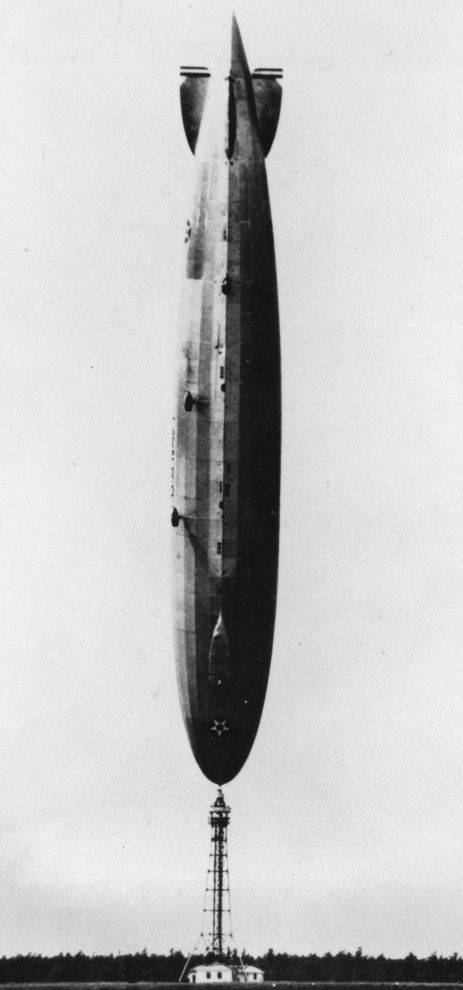
There were difficulties in choosing places for the construction of an aeronautical base. In addition to the construction of huge slipways (hangars), a mooring mast and mooring circles on the ground, considerable water was also needed for ballast and a device for storing lifting gas.
There is no doubt that airships with such high data and at that time were the best tool for conducting reconnaissance in large ocean expanses, especially in the Pacific Ocean, where the United States was suspicious of Japan’s military preparations.
Hard airships had three important advantages over ships and airplanes: they moved at a speed of three times the speed of sea-going ships, had several times greater payload than the aircraft of that time, and no less than ten had a longer range. And at the end of the 20-ies, a fourth factor appeared - the ability of airships to carry aircraft on board.
The main argument of the opponents of the airship was their vulnerability. I remembered the cases of the First World War, when zeppelins easily fell down over London. But at that time the airships were filled with explosive hydrogen, and non-combustible helium gas was produced in America. Therefore, the new American airships ZRS-4 and ZRS-5 were not so easily shot down by fighters of the thirties. Lifting gas helium was filled in the compartments not under pressure and therefore could get out of the hole only in the upper part of the body. In addition, helium was in separate ballonet and an entire squadron of fighters (armed with rifle-caliber machine guns) was required to inflict serious damage to the airship. On board were up to five fighters capable of repelling an air attack, In addition, there were also several rifle installations. But it was smooth on paper. Anti-aircraft guns or missiles from a fighter could easily send a ship to the ground. And getting into a large and sedentary target was easy.
In addition, the aircraft on board were used to expand the field of view when conducting reconnaissance in the ocean, and not for air combat. With stable radio communication and reliable radio transmission on the airship, the survey from two aircraft expanded to 370 km along the front. For more efficient operation of airplanes in the air, it was necessary to foresee on the dirigible a position of a flight director who would also perform the functions of an information center in combat conditions. In my dreams, there was a project of refueling the airship in the air from a tanker aircraft, which could take off both from the airfield and from an aircraft carrier. In the future, they wanted to have on board a small transport aircraft to service the airship (crew change in a long flight, replenishment of food and ammunition).
Soon, the ZRS-4 "Akron" armed with new aircraft "Curtiss" XF9C-1. But trouble is hard to predict. 4 April 1933, a thunderstorm, effortlessly cracked down on the "lord of the heavens" Akron. Here, helium was no better than hydrogen. A powerful cold front with thunderstorm activity and heavy rainfall pounced on the "whale" off the coast of New Jersey. The descending air flow threw it to the water, no efforts of the crew could keep the airship from falling, it continued to fall down the tail end at a speed of 4 m / s. To stop the descent, they dropped the ballast, the elevators completely shifted to the ascent, as a result the stern part sank even lower, increasing the slope of the airship to a dangerous value 25 °, until the lower keel touched the water.
The blow of tremendous power shook Akron. Eight of its engines worked at full capacity, but they could not pull out the tail filled with water from the ocean. With the tail submerged, the movement of the Akron slowed down, and the nose bulged up. Then the nose began to fall, until the whole apparatus was in the water.
While the Akron was surviving its last moments, the German ship Phoebus was slowly walking through a strip of fog and a wall of rain. "Phoebus" was already floating among the wreckage of the airship, there was a smell of gas in the air. The destroyed ship was not visible on the surface. On that dark night, only three crew members from 76 were rescued aboard. So crashed the biggest American airship.
But Akron was the pride of the United States. An extraordinarily expensive device - more than 5,3 million dollars (full-time, of that time) was spent on its creation and another 2 million on infrastructure. After the construction, the airship flew over large cities so that taxpayers could see: the money was not spent in vain. After the death of Akron, America experienced a shock. This had an impact on the government’s decision: to urgently complete the construction already underway of the second giant - an exact copy of the deceased. Let the whole world see: we are still strong. New ship and became "Macon".
The death of the airship "Shinandoa" and "Akron" did not teach the command of the US Navy. At the end of 1934, the Macacon airship hit a tropical storm en route to the West Indies. This time there were no casualties, but the hull design was damaged quite badly. They decided to carry out repairs without putting the airship in the boathouse, and the crippled Macon continued to fly, receiving patches at the affected places from time to time.
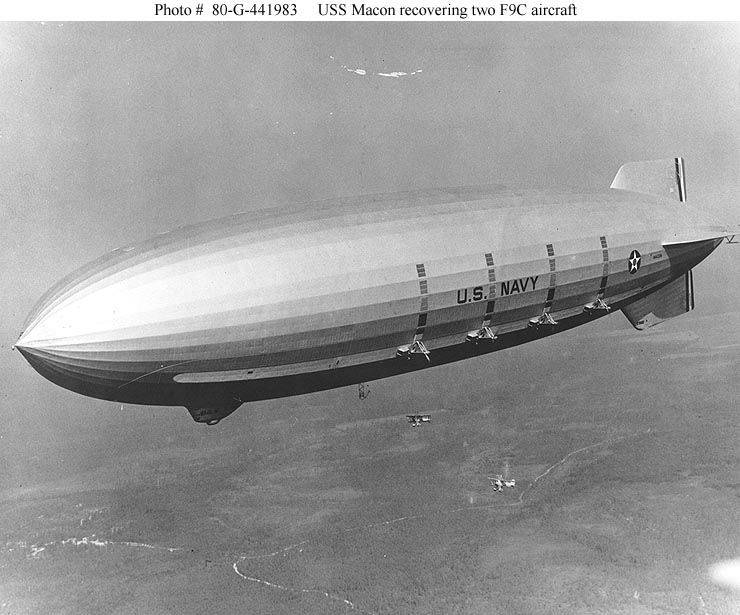
In the winter of 1934, Macon participated in sea maneuvers off the west coast of the United States. The dawn of February 12 was as gloomy as the day before. While cruising at an altitude of 770 m, the Macon sank and fell into the clouds with heavy bumpiness and rain. Following the coast, the crew felt a sharp blow, and the airship dramatically tilted to the starboard. Steering Clark could not hold the steering wheel, and the airship began to rotate rapidly.
In 17.05, the sailors on the watch inside the upper keel found a strong destruction and a breakthrough of the gas chambers, from where helium began to leave. When approaching the coast, observers from the ground noticed that the upper keel began to collapse in the air.
Dropping all possible ballast, the airship soared up in less than 2 minutes. "Macon", breaking through the clouds, continued to climb to the height of 860 m, and beyond the height limit all the valves on the gas cylinders automatically opened, releasing the remaining gas into the atmosphere. However, despite this, the airship took off on the 1480 m.
By that time, so much gas was lost that the airship could only decline. Gave a distress call. Commander Wiley decided to make a forced landing on the water, because the coast was mountainous and also covered with fog. With the rapid rise of the airship upward due to the loss of gas in the tail section, the balance was disrupted, and the airship flew with a raised nose.
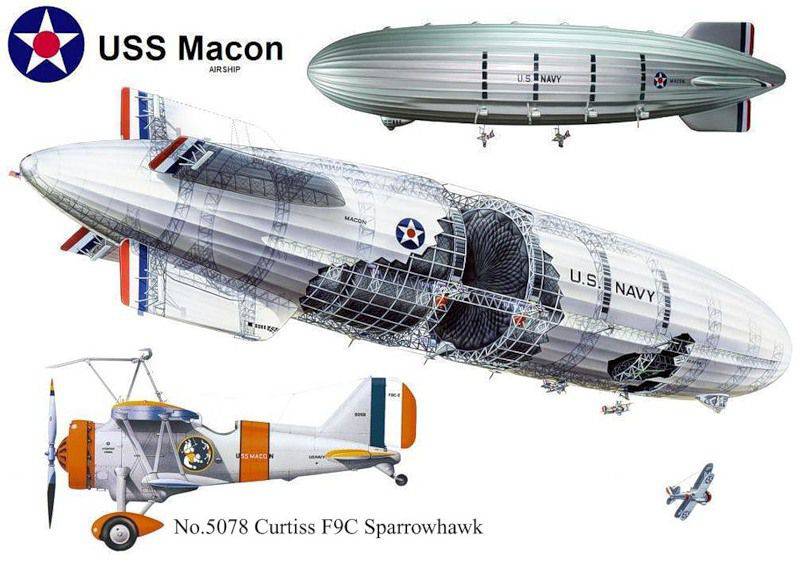
The crew, moving into the bow, could not balance the ship. By the time the tail section touched the water, the crew members managed to put on life jackets and inflate the rafts. Of the 83 people aboard, only two were missing.
The death of "Macon" occurred from a relatively small constructive flaws. With a side gust of wind, the upper keel with a part of the frame was torn off, debris damaged three gas cylinders in the stern of the airship, lift due to the loss of helium decreased by 20%, which led to trouble. The survivability of American airships did not allow them to survive even in peacetime. The idea of combat aircraft carriers turned out to be a utopia.
The era of the large airships ended with a disaster the German airship "Hindenburg" in 1937 year. It was the Titanic of the sky - the most expensive and most luxurious airship ever built by human hands. The main killer of the hydrogenated zeppelin was a fire. On the "Hindenburg" measures were taken, it seemed, completely excluding the appearance of even a spark. On board the airship there was a strict ban on smoking. All who climbed aboard, including passengers, were obliged to pass matches, lighters and other things that could form a spark. Nevertheless, this 240-meter giant, the most perfect for the whole history aviation, it was killed by fire.
6 May 1937, thousands of New Yorkers witnessed a rare and magnificent spectacle - the arrival of the Hindenburg airship from Europe. It was the eleventh transatlantic flight made by the famous airship. The captain of the ship Prussus specially held his mastodon very tightly to the Empire States Building, so that reporters and photographers could better see the German "flying miracle."
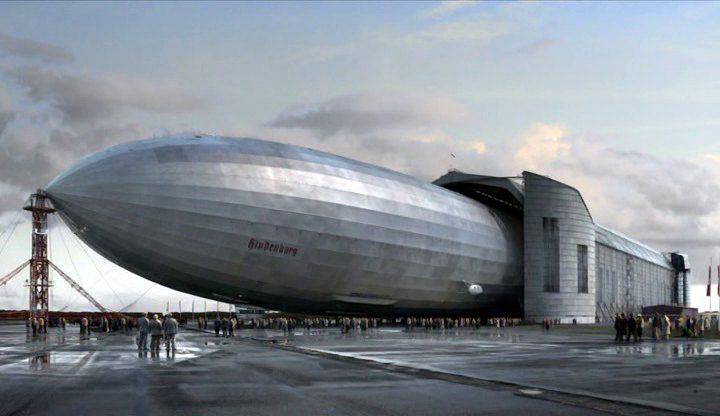
The 248 man of the mooring team was already ready to take the mooring lines and lead the Hindenburg to the mooring mast, but the sky was dragged by thunderclouds and, fearing a lightning strike, Captain Pruss decided to wait aside until the peals of the May thunderstorm subside. By the 19 clock, the lightning went off behind the Hudson, and the Hindenburg, buzzing with 1100-strong diesels, began to slowly pull up to the mast. And when a hydropnee cable dropped from the airship fell on the wet sand, the zeppelin body, struck by the discharge of static electricity, glowed brightly from the inside. Its tail, engulfed in a raging flame, abruptly went down. The passenger and crew member 62 managed to get out of this hell, the 36 man burned to death.
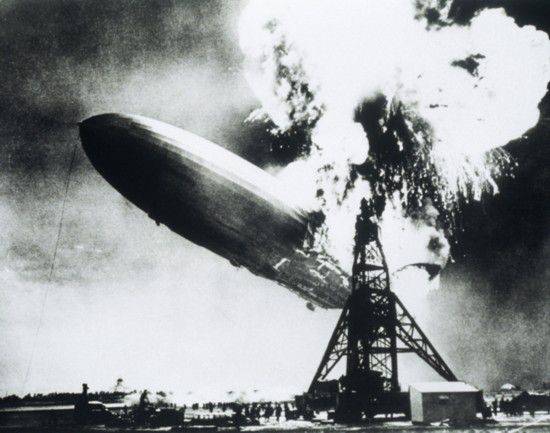
High accident rate has always been inherent in this class of aircraft. For example, in Germany from 137 airships built over 20 years at the beginning of the century, only 30 had a good life, 24 - burned in the air and on the ground, the rest are lost for other reasons.
In World War II, only the USA and the USSR used airships for military purposes. The heavy losses of the fleet prompted the US Congress to adopt a program for the construction of semi-soft airships for escorting ships and protecting the coast. After the war, the US aeronautical fleet was significantly reduced. In the USSR, during the war years only one airship was used. The balloon B-12 was manufactured in 1939 and became operational in 1942. This airship was used for training paratroopers and cargo transportation. Before 1945, 1432 was flown on it. 1 February 1945 was created in the Soviet Union, the second airship of this class - the airship "Victory". It was successfully used as a minesweeper in the Black Sea. Another unit, the Patriot B-12bis, was commissioned in the 1947 year and was intended for crew training, participation in parades and other propaganda activities.
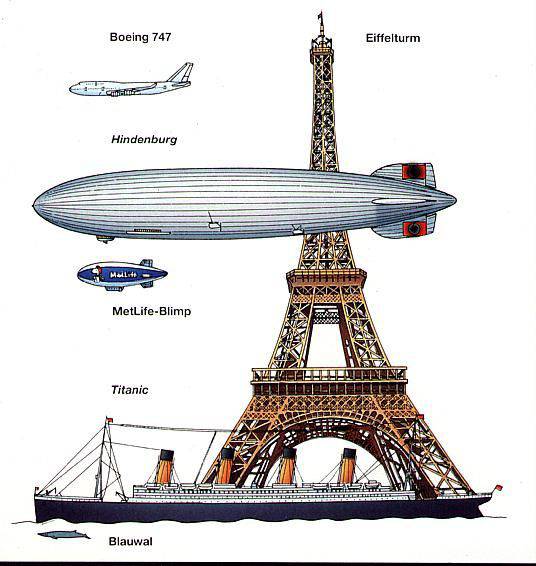
Currently, in the leading countries of the world, work is carried out on airships, including unmanned altitudes, capable of flying for long periods at altitudes of 18-21 km.
Sources:
Shuvalov D. Falcons of the Three Elements // Aviation Review (AVIO). No.3. C. 3-14.
Richard K. Smith Carriers lighter than air. M .: PC "Air", 1999. C. 90-103, 121-128, 150-152.
Vyatkin L. Helmut, we burn // Technique - to the youth. 1993. No.2. C.18-20.
Taras A. Dirigibles in war. Minsk: Harvest, AST. 2000. C. 24-25, 391-405, 408, 414-415, 419-420. 426-447.
Beloborodko A. Persons of romance and heroism // Wings of the Motherland. 2000. No.6. C. 17-20.
Ionina N. One Hundred Great Disasters. M .: Veche, 2001. C. 133-136.
Zhuchkov Yu. Airship raids // Aviation and Cosmonautics. 1998. No.2. C. 27-33.
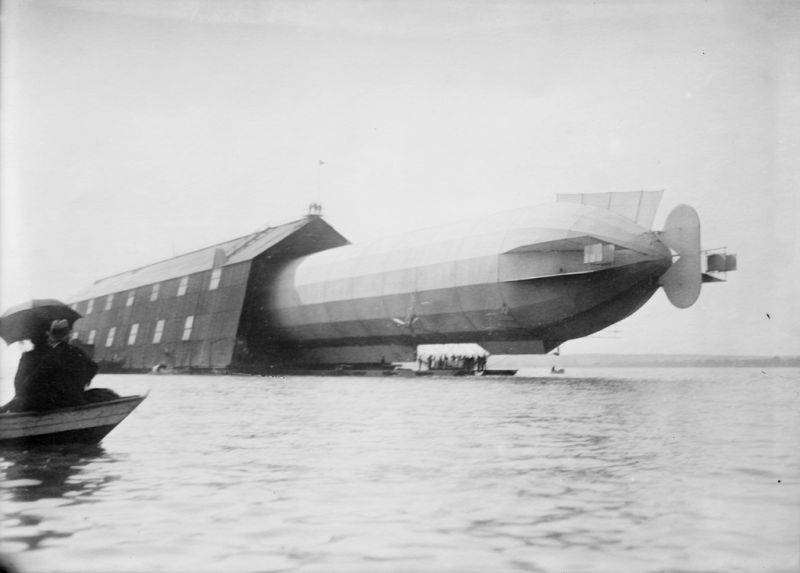
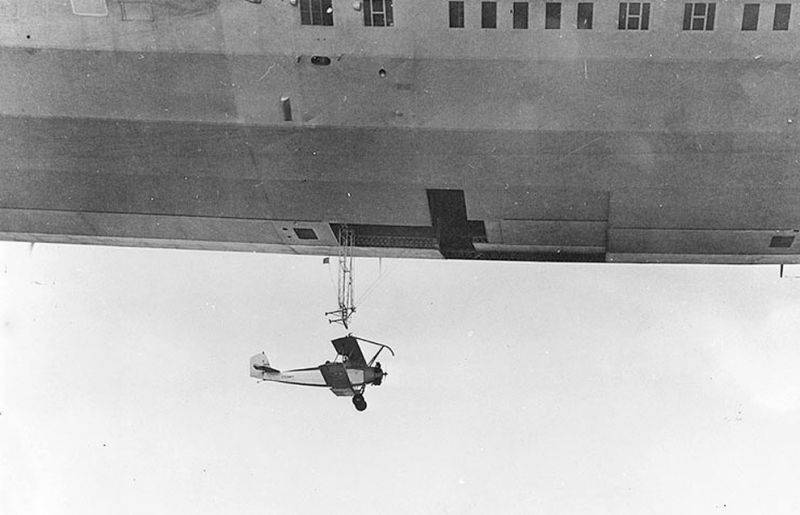
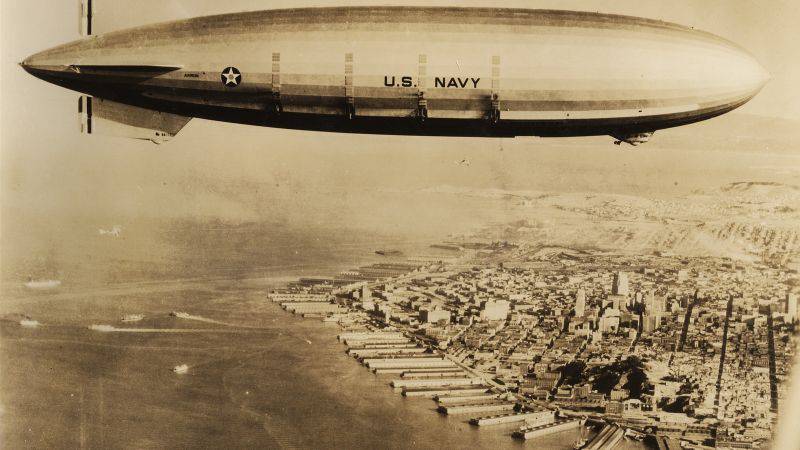
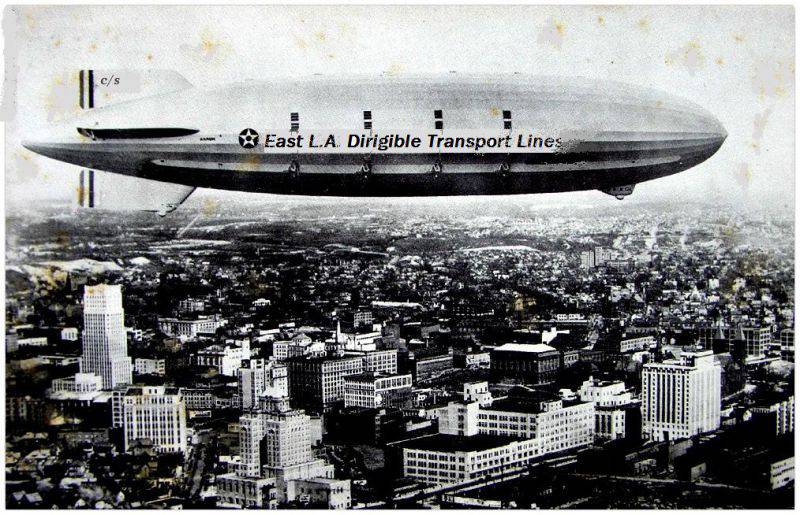
Information